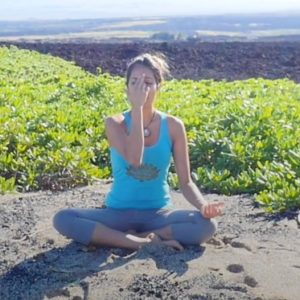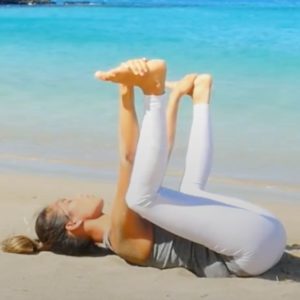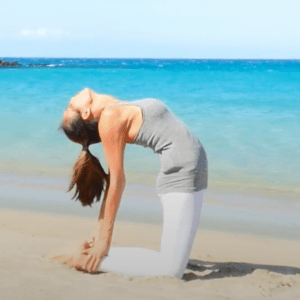Today’s Poses: Bow Pose and Camel Pose
Bow Pose and Camel Pose
Bow Pose and Camel Pose add greater flexibility to the back and strengthen the muscles. Try these poses with the Guided Yoga Series from YouVeda.
Bow Pose – Dhanurasana
Bow Pose Dhanurasana has been named after the shape the body takes while performing it – that of a bow. Dhanu means bow; Asana means posture or pose.
Steps
- Lie on your stomach with your feet hip-width apart and your arms by the side of your body.
- Fold your knees, take your hands backward and hold your ankles.
- Breathing in, lift your chest off the ground and pull your legs up and back.
- Look straight ahead with a smile on your face.
- Keep the pose stable while paying attention to your breath. Your body is now curved and taut as a bow.
- Continue to take long deep breaths as you relax in this pose. But bend only as far as your body permits you to. Do not overdo the stretch.
- After 15 -20 seconds, as you exhale, gently bring your legs and chest to the ground. Release the ankles and relax.
Benefits
- Strengthens the back and abdominal muscles
- Stimulates the reproductive organs
- Opens up the chest, neck, and shoulders
- Tones the leg and arm muscles
- Adds greater flexibility to the back
- Good stress and fatigue buster
- Relieves menstrual discomfort and constipation
- Helps people with renal (kidney) disorders
Camel Pose – Yoga
Camel Pose is a backbend that stretches the whole front of the body. It is performed on the knees and is often used as preparation for deeper backbends.
- Begin by kneeling upright with your knees hip-distance apart. Rotate your thighs inward and press your shins and the tops of your feet into the floor. Do not squeeze your buttocks.
- Rest your hands on the back of your pelvis, with your fingers pointing to the floor. Lengthen your tailbone down toward the floor and widen the back of your pelvis.
- Lean back, with your chin, slightly tucked toward your chest. Beginners can stay here, keeping their hands on their back pelvis.
- If you are comfortable here, you can take the pose even deeper. Reach back and hold onto each heel. Your palms should rest on your heels with your fingers pointing toward your toes and your thumbs holding the outside of each foot.
- Keep your thighs perpendicular to the floor, with your hips directly over your knees. If it is difficult to grasp your heels without feeling compression in your low back, tuck your toes to elevate your heels. You can also rest your hands on yoga blocks placed on the outside of each foot.
- Lift up through your pelvis, keeping your lower spine long. Turn your arms outward without squeezing your shoulder blades. Keep your head in a neutral position, or allow it to drop back without straining or crunching your neck.
- Hold for 30-60 seconds. To release, bring your hands back to your front hips. Inhale, lead with your heart, and lift your torso by pushing your hips down toward the floor. Your head should come up last. Rest in Child’s Pose (Balasana) or Corpse Pose (Savasana).




